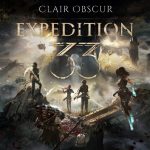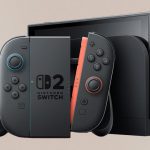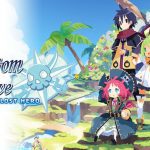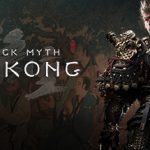Well this was probably one of the most hyped games this year. It was meant to come out later, but I guess they finished it early so… Yeah. July it is. I actually had time off work, so this worked out.
I enjoyed the other Xenoblades, except for X which… I dunno, maybe I’d need to give it another chance. 2 is the one I prefered, didn’t actually find the gacha-like system to be all that bad even though I never did get KOS-MOS.
So let’s go, see if the series continues being good!
Developer: Monolith Soft
Publisher: Nintendo
Release date: July 29, 2022
Platforms: Switch
Genre: Console-style RPG
Review
The story is one of epic scale, a crazy world and… stuff. I really don’t want to say too much about it so I’ll keep it extremely surface-level. In the world of Aionios there’s 2 kingdoms, Keves and Agnus, that are at constant war. There’s certainly some weird things going on, with people coming into the world as 10 years olds, train to be soldiers, and, if they don’t die at war, ascend to some form of afterlife when they’re 20. You play as a group of 6 characters from both Keves and Agnus, who join as a team after encountering a powerful monster and trying to fight him off. In that encounter they meet a man who is much older than 20, and gain the power of Ouroboros, which enables them to fuse and also use other peoples’ Blades. Blades, in this case, aren’t people like in XC2, but they’re just weapons people can summon. As Ouroboros, the group becomes enemies of both kingdoms, so they start finding out why the world works like it does with its seemingly infinite war, fight the Consul who seem to work for both factions (while being the leaders of the different colonies for each faction). There’s really a lot more I could go into, but I’d really rather not. So you’re getting a very simple summary.
I’m really not gonna go in-depth with this one when it comes to story. I will just say that I actually really enjoyed it, which is surprising since most games have pretty meh or forgettable stories (especially games that are lauded for having really good stories, those tend to be especially meh). I think what I like most about it is that some of the weird things early in the game are explained pretty much perfectly, with a lot of elements alluded to that pay off or are brought back in a way that makes a lot of sense. Like, the first thing that happens in the game is time seemingly stopping, and that’s not addressed for a while, but that comes into play some time into it. Even though you CAN pretty much get the whole story (minus some details) by around the halfway point of the game, it’s all very well done from a writing perspective. Also I did like all the main characters, though I wish we got a bit more of some of the side characters in the main story (which makes sense that we don’t since so many of them are entirely optional).
Of course, we can’t talk about Xenoblade without mentioning that the game looks fucking beautiful. This is just Monolith Soft on their A-game. The environments are extremely beautiful. If you’re stopping to look at anything, you’re looking at some of the prettiest shit you’ve ever seen in games, with some pretty unique designs even if the landscape follows pretty standard biomes. It still kinda does the “you’re actually on giant monsters” thing, though it’s never specifically referred to. And there’s a ton of variety. The whole game looks amazing. And I also really like most of the character designs, as far as named, important characters. Of course best girl is Monica, but the guys, the girls, they all look good.
BUT. On a technical level… I mean, it’s really impressive how well Monolith are able to push the Switch’s shitty hardware. But this is done by basically keeping only what they want at high-res, while dynamically reducing the resolution of everything else on-screen. And there’s some moments, especially in some battles, where the whole game just becomes a jumble of pixels that only vaguely represents anything. Despite that, though, the game DOES keep the UI stuff high-res, so the most important information (character HP, skill cooldowns and such) is always visible, even if you can no longer differentiate the actual characters/enemies. And the framerate, due to the dynamic shittening of the graphics, remains pretty smooth too.
The localization is awful. I say this a bunch, but the advantage of knowing Japanese (even at a pretty low level like me) is that you can put the original voices on and notice pretty easily when the official translation is incorrect. In this case, pretty much every line of dialogue is entirely rewritten. You end up with dialogue that says the same basic thing most of the time (but not always) while adding “flair” to it that doesn’t fucking exist in the Japanese version. There’s certainly no “Sparks”, “Snuff” (Really? “Snuff” instead of “Shit”?), “Mudders” and whatever other shit they put in the localization when you’re listening to the Japanese dialogue. Or you have characters getting completely ruined, like Ghondor who acts like a bit of a rude delinquent in the Japanese version, nothing too over-the-top, but goes around calling everyone bitches in the english version (basically every other word in her dialogue in english is her calling her mom “Bitchqueen”). Also why is “bitch” okay, but “fuck” isn’t? For consistency, why not have a weird stupid word to replace “bitch”? It’s so dumb. I could just grab plenty of examples of incorrectly-translated sentences, but I don’t have space in this review for the entire game’s script. Many of the characters are just blatantly renamed for no reason too (which is very confusing if you’re playing with japanese voices, because you’ll hear a name that isn’t in the english script and wonder who that is meant to be), I have no idea why they think that’s a good idea… we’re nerds, we’re used to reading/hearing japanese names. “Localizers” need to learn to just translate shit and not try to add their own garbage to the stuff they’re working on. Their job is to make a product accessible to people who use a different language from the original, not to slather their lack of talent and creativity on top of someone else’s work. See japanese words, write them in english. Easy. Nintendo’s localizations have been shit for a good long while, and it seems they have no intention of being halfway decent. It’s a shame.
So let’s go into gameplay! This keeps on the style of the previous Xenoblade titles, it features real-time combat that is only semi-turn-based, as actions can be taken independently of the auto-attacks.
So I’ll start with combat, as there’s a bunch to talk about. Combat starts on the field as you travel around. Some enemies are aggressive, some aren’t. Once combat starts you can run away, by running away (character switching can help the process), or fight. So enemies might be super-overleveled, or there’s unique versions which are just much stronger versions of regular monsters which is great for EXP. At its core you choose a target (you can switch if there’s multiple enemies around), get close enough to them based on which weapon you’re using and your character will automatically attack at a regular interval. But that’s not all, of course. Other than the intro segments of the game, your party will always have 7 characters in battle: 6 from your main party, and one Hero which you can select. You will control one of the main characters, with the other characters acting based on what their role is (Attacker, Defender or Healer). The character you control will have 2 selections of 3 special attacks. One selection (using the face buttons) are based on their currently-equipped class, while the other selection (using the d-pad) are skills you get that you mastered from different classes. You can move around as you want in the battlefield, though movement doesn’t matter THAT much beyond getting into AOE buffs, avoiding AOE attacks, or positioning for certain attacks. Targets are shown by an arcing line between the enemy and the character it’s targeting. If the line is red, that means to be careful because the target isn’t a defender.
Special attacks can be used at any moment rather than being tied to cooldown like auto-attacks, and can eventually be comboed into each other. They have different effects. Some heal, some set zones that you can get buffs from, some just straight up do buffs, and some cause nerfs on enemies. Some of these are positional, so they may have effects if you’re using them in front, on the side or from behind your target. Specials have 2 possible ways to cooldown, with some recharging over time, and others recharging, a bit faster, through hitting enemies with auto-attacks, which is actually based on which kingdom the class using the skill is from. I mentioned that you have 2 sets of skills (one on d-pad, one on face buttons), and one fun thing is that, if the skill on the corresponding sides of the controller (so Up and X, Right and Y, Down and B) are available for use at the same time, you can combine them both in one attack. When you do that the animation of the attack with be that of the face button, but the effect of the d-pad skill will happen at the same time. Originally these are the only attacks you can combo into, but eventually the combat opens up a bit.
Some special attacks cause Break. Break doesn’t do much on its own, but hitting with an attack with the Topple while Break is on topples the enemy, basically knocking them down for a bit. From Topple, you get extra attacks that have strong effects: ones that have Launch and ones that have Daze. A launched or dazed enemy will take extra damage while still being unable to act. And then a Launched enemy can get Smashed as a finisher, and Dazed enemies can be Bursted as a finisher. The finishers deal a bunch of damage, while also causing a bunch of that monster’s drops to pop out which is nice. You actually get some of these effects way late in the game, Burst is something you get in the last portion of it.
Oh and there’s Supers. It has cooldown similar to the specials, and is just a very strong attack. Most supers are based on the class of the character, but there’s a few very strong supers you can gain in different ways. Not really much to say here, it’s just another attack option.
As Ouroboros, your 6 main characters earn a special ability, that being combining into big robots! Noah can combine with Mio, Eunie can combine with Taion, and Lanz can combine with Sena. You have a meter that goes up, and when it fills up, you can Interlink. There’s several levels of Interlink, with the combination being stronger if you get the meter 3 levels up and it powers up certain skills. As far as gameplay, the robots control much like the other characters. Each character has their own robot form (so if you transform while playing as Lanz, you can switch to Rena’s robot form), there’s specials and supers… Pretty normal. You are invincible in robot form though, it’s a good way actually to save a character that’s about to die, or draw aggro away from characters (if, say, your defenders aren’t doing the job).
Chain attacks are another big element. Essentially there’s another meter that goes up during battle. When it’s full, you can launch a chain attack on your current target. You select a chain order (basically a character that will do a finisher after the current attack, plus some special effect may it be increasing attack, changing TP values and so on), then you will select a character and one of that character’s specials, which will hit the enemy. Each character will have a TP value. When you get over 100%, the finisher happens, with more damage when you get higher. At 100%, one character will recover for the next attack in the chain, 2 characters at 150% and 3 characters at 200%. Sometimes this leads to TP values being increased so you can get higher percentages next. Weird note, healers can’t get the TP meter over 100%… unless they’re heroes. Not sure why the heroes are an exception to that. Hitting attacks does increase the percentage of damage in the next chain. Killing an enemy during a chain attack also increases the experience points that you gain from killing them so doing more and more damage is good even if the enemy is already dead. And there’s a mechanic that allows for a Ouroboros attack, which acts like a normal chain but ends with a big attack with some of the robots. You can eventually deal millions of damage with this mechanic… which sounds like a lot but isn’t.
Overall combat ends up being a lot of the game playing itself, since there’s literally 6 characters you have no control over (you CAN switch characters though). Your role in combat is basically just controlling one character, which will end up acting much like the AI overall. So more importantly, you’re meant to manage your characters. If a character is about to die, switching to that character to move them back while waiting for healing instead of drawing more aggro, for example. Still, generally the AI does a good job of doing that, so your job is more to make sure your character acts optimally, participates in break combos and so on. And of course you’ll be the one deciding on your Interlink and deciding when to launch chain attacks. You CAN let the combat play fully on its own, but some of its decisions are… eh. One thing about this game’s combat generally is that enemies have a LOT of HP. Like, even if you’re MUCH stronger than enemies and all the battles are easy (more on that later), they have a LOT of HP. Like, I said you can deal millions of damage with chain attacks… For not-even-endgame bosses, that can be less than a third of their HP. So yeah, enemies in general, but especially bosses are huge bullet sponges.
Your party, as said before, is comprised of 7 characters. 6 of them are the story’s main characters, and the last one is a Hero character. The 6 main characters can freely change classes outside of battle. Each class is either an attacking class, a defensive class, or a healing/support class. The hero you select cannot change classes, so will always be a specific role. They also can’t be as customized as the rest of the characters.
Classes are interesting. While they all function at least a little bit similarly, such as defenders all being aggro magnets, attackers being DPS and healers doing healing and buffs, individual classes still have different uses. A defender might be a bit more DPS focused as its method of aggro gathering, or have big shields to block damage, or might be dodge-focused but getting aggro by dodging. Attack classes might be focused on single-target damage, AOE damage, or damaging status effects. A healer class might focus on healing, placing regen areas or buffing. This makes team building actually pretty interesting since there’s a lot of classes and a massive amount of possibilities.
Unlocking classes is done in story progress, and in sidequests. Unlocking a class, for the most part, also unlocks the character the class belongs to as a Hero you can select, with a few occasional exceptions. But a class, originally, is only unlocked for one character. You can unlock it for the other characters by using it… I think. Basically, on the class selection screen, the class will show up as a silhouette, and that silhouette fills up as it’s being used but other characters… I think. And of course selecting the hero for that class also increases that meter… I think. So classes can only be unlocked if you’re progressed in the game enough to even get that class, which makes sense of course since the characters that the classes belong to are in different colonies in the world. I don’t think there’s any non-glitchy ways to unlock classes early.
As you travel the very large, very empty, world, you will occasionally find camps. Camps have a few functions. Most important is, of course, resting. This does nothing of course (you recover HP after you win a battle, so there’s no need to heal), but there’s a few points in the story where resting is required to progress. You can train, which is the main way you’ll end up leveling. Doing stuff in the game (battles, sidequests) gets you bonus EXP, which is what you’ll use. The amount of bonus EXP is pretty high, so doing this levels you up quite a bit as you progress. Then there’s cooking, allowing you to eat meals that give you a special effect for a certain time limit. And finally there’s gem crafting. Each character gets 3 gem slots (some unlock based on their levels). There’s a few categories of gems, and a bunch of gems per category. Gems increase stats or provide some sort of passive effects. Gems are crafted using all sorts of materials, and each gem can be increased up to 10 levels. This allows for decent customization, especially since a single gem can be equipped to multiple characters at once. So if your gem that gives extra attack is level 5, it’s level 5 for everyone that uses it.
Character customization is fairly simple. There’s levels which you get from EXP. Each of your characters can be set to a different class. Classes can power up for 10 ranks (which happens pretty quickly), though later sidequests allow to unlock 10 extra ranks (there’s a sidequest for each class), to make them even better. There’s skills, which are passive upgrades similar to gems, which you gain based on classes you’ve unlocked and ranked up on a character, you can set 3 of them. Arts are the special attacks, you set them as I already described. The ones you set on the D-pad are skills you’ll have mastered from the different classes (you master those skills, obviously, by using them a bunch). There’s accessories which you can find or buy, those provide the same kind of upgrades as gems and skills, and you have 3 slots. The game does help a bit by highlighting which pieces of equipment would be good for your character’s current class… but there’s also no sorting and such, so going through a list of hundreds of accessories to find what you want is really awful.
Finally, interlinks have minor customization. Each robot has a skill tree where it gets a variety of passive boosts and arts, plus the ability to share 2 of those boosts with their interlink partner. The arts function just like it does for characters. Yay!
One of the game’s biggest problems, outside of the awful localization, is lack of balance. See, you’ll be doing sidequests if you want to get party skills and moreso if you want to get all the playable classes (or increase the rank cap for some of the classes)… or just maybe you want to do everything in the game, that’s a possibility. Of course, as a result of doing sidequests, you get a lot of experience. The devs should have known that people would be doing sidequests to unlock classes and such, I mean… they made the game. There’s a point in the story, quite early into it after Colony 4, where the game opens up a bit. So, as one would do when a game opens up and gives you a bunch of sidequests to do the first time in a game… I did that. I unlocked several classes, did all the sidequests I could find, and when I decided to get back to the plot, I was 10 levels higher than the story enemies. I did this again for the next few areas, ending up eventually at least 15 levels above story battles for the rest of the game (sometimes more). In the last chapter or two, I decided I’d stop doing sidequests and just finish off the story (with only a few sidequests to get specific classes to a higher rank), and even with minimal side content, I was 7 levels above the final boss. The result of all this, of course, is that all story battles after Colony 4 are easy. Too easy. I am curious about hard mode, but I feel like the 15-18 level advantage probably doesn’t do much to eleviate things in hard mode. The solution would’ve been to, you know, balance the game around the fact that people would, indeed, unlock classes and do some side content along the way. This pretty much bothered me all the way through, because combat strategy became just “well I’m higher leveled than everything so I don’t need to put any effort to win”.
As far as game flow, it’s much as you’d expect from a more classic-style JRPG (when I review Soul Hacker 2, you’ll see the difference of a classic-style game like Xenoblade and a modern-style JRPG like Soul Hacker 2). You travel the world, get to the next area where the story will progress, and in towns you can talk to NPCs to get sidequests. Sidequests tend to be fairly standard “find X items” or “kill X enemies” stuff, but there’s also a pretty annoying amount of “talk to X person” sidequests which are awful and should not be a thing. Exploring the world is fairly pointless a lot of the time unless you really want to find all the unique monsters or really want to play the flute to corpses, but exploration is a risk too since high-level enemies tend to be aggressive, so going into certain areas might be problematic. As you progress through the story, going back to old areas unlocks more and more sidequests, so, pretty much at any point past Colony 4, you can spend a LOT of time playing without making any progress whatsoever. Fun!
I may have missed a few elements, but I think I’ve covered the most important parts.
Overall
I liked this game. A lot. But also there’s some things I wasn’t very into.
It’s a classic-style JRPG which are pretty rare nowadays and it’s well done on that end. The combat is fun but also kinda automatic since there’s always 6 characters you’re not controlling. The balance really needed work because I spend so much of the game WAY over-leveled just by doing a pretty average amount of sidequests. The localization is shit. However, despite the localization, the story is still really good.
This is one where I’d say the good more than outweighs the bad. It’s big, epic scale, which is something we don’t get much from JRPGs anymore, it has good gameplay, good music, good story… It’s good stuff. They did very well with this game.
This gets a very solid recommendation from me, despite the few issues. If you have a Switch you should totally be getting this. Really the only thing I can add on to this review is… I think I prefered Xenoblade 2 overall, and I think the combat in Xenoblade 1 is slightly better-designed, but 3 has the better story, I’d say a more interesting world, and also it has Monica.








Leave a reply